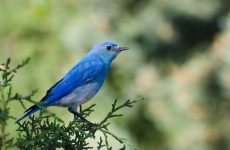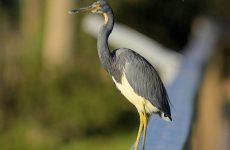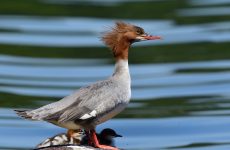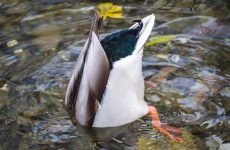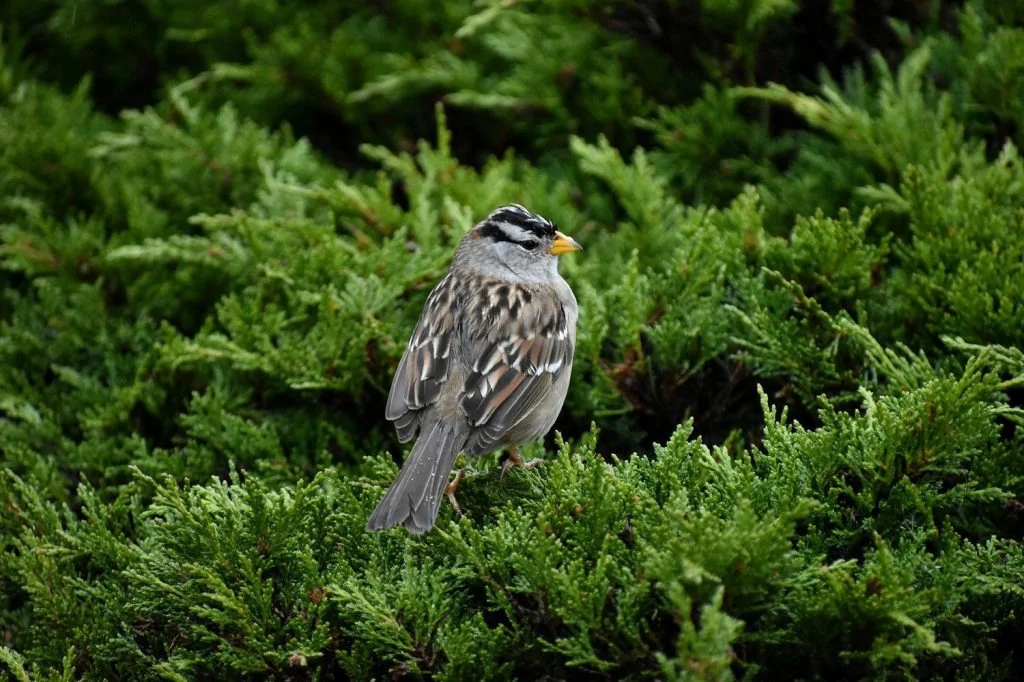
There are 44 species of sparrows in North America, and 6 of these have striped heads. This guide will help you identify those species, so you know when and where you are likely to spot them.
Sparrows belong to a large, global family of songbirds with as many as 300 different types of species. With these many similar types of birds, they can be quite a challenge to identify, so we created this list of sparrows with striped heads to get you started.
You can find sparrows with striped heads mostly in open habitats, like fields, but they are so used to being around people that they quickly make themselves at home in buildings, barns, and parks.
Depending on where Sparrows with Striped Heads live, they will forage for available seeds and nuts on the ground during winter and feast on insects during the breeding season.
Sparrows with Striped Heads:
- White-throated Sparrow
- White-crowned Sparrow
- Chipping Sparrow
- American Tree Sparrow
- Clay-colored Sparrow
- Black-throated Sparrow
1. White-throated Sparrow
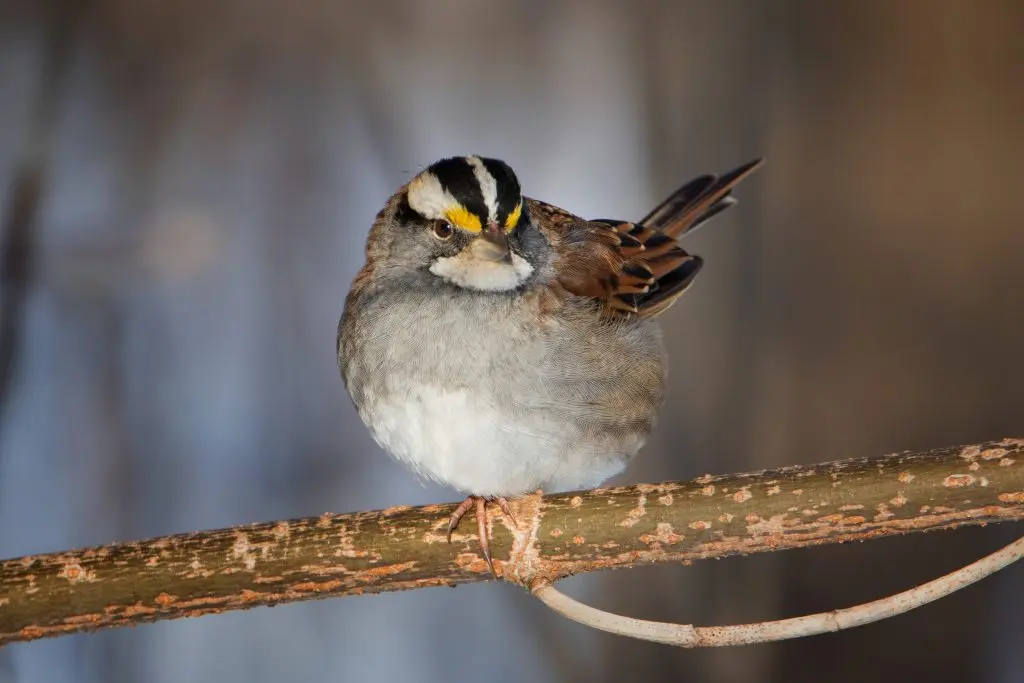
White-throated Sparrows have a distinctive black and white striped head, bright white throat, and yellow between the eye and bill. Their backs are brown, and underneath is gray.
- Zonotrichia albicollis
- Length: 6.3-7.1 in (16-18 cm)
- Weight: 0.8-1.1 oz (22-32 g)
- Wingspan: 7.9-9.1 in (20-23 cm)
White-throated Sparrows are migratory birds, breeding mainly in Canada before heading south in winter to Eastern and Southern States and the Pacific Coast.
You can find White-throated Sparrows on the ground in forests and woods and along the edges of wooded areas, often in large flocks.
White-throated Sparrows diet is mainly seeds of grasses and weeds as well as fruits such as grape, sumac, mountain ash, blueberry, blackberry, and dogwood. They will also eat a large number of insects from the forest floor, especially in summer.
White-throated Sparrow song: Their distinctive whistle is a few notes that change pitch once. They sound like a person whistling.
Nests of White-throated Sparrows are built by females, usually on the ground or low to the ground, in dense vegetation. They are made from moss and twigs, lined with softer material such as grass and animal hair.
They lay one to six eggs, which take around two weeks to hatch and a further week to two weeks for the young to fledge.
Attract the White-throated Sparrows to your backyard feeders with millet and black oil sunflower seeds on platform feeders.
Fun fact: White-throated Sparrows always breed with the opposite color morph, either tan-striped or white-striped heads.
2. White-crowned Sparrow

White-crowned Sparrows are large grayish sparrows with long tails and small bills and bold black and white stripes on their heads.
- Zonotrichia leucophrys
- Length: 5.9-6.3 in (15-16 cm)
- Weight: 0.9-1.0 oz (25-28 g)
- Wingspan: 8.3-9.4 in (21-24 cm)
White-crowned Sparrows breed in Alaska and arctic Canada before heading south to the lower 48 and Mexico for winter. However, some may remain all year along the Pacific Coast and the mountainous west.
You can find White-crowned Sparrows in weedy fields, along roadsides, forest edges, and in yards foraging for seeds of weeds and grasses or fruit such as elderberries and blackberries.
White-crowned Sparrow song: Males song is a clear whistle, followed by a series of chaotic whistles and finishing with a buzz. Calls are usually short and sharp. Females rarely call or sing.
Nests of White-crowned Sparrows are made from twigs, grass, moss, and pine needles, often low to the ground in shrubs or on the ground in the tundra. They lay up to seven eggs, which take up to two weeks to hatch and around nine days for the chicks to fledge.
Attract White-crowned Sparrows to your backyard with sunflower seeds and seeds that are dropped by other birds at the feeders.
Fun fact: Young White-crowned Sparrows take a further week or two to learn to fly after leaving the nest.
3. Chipping Sparrow
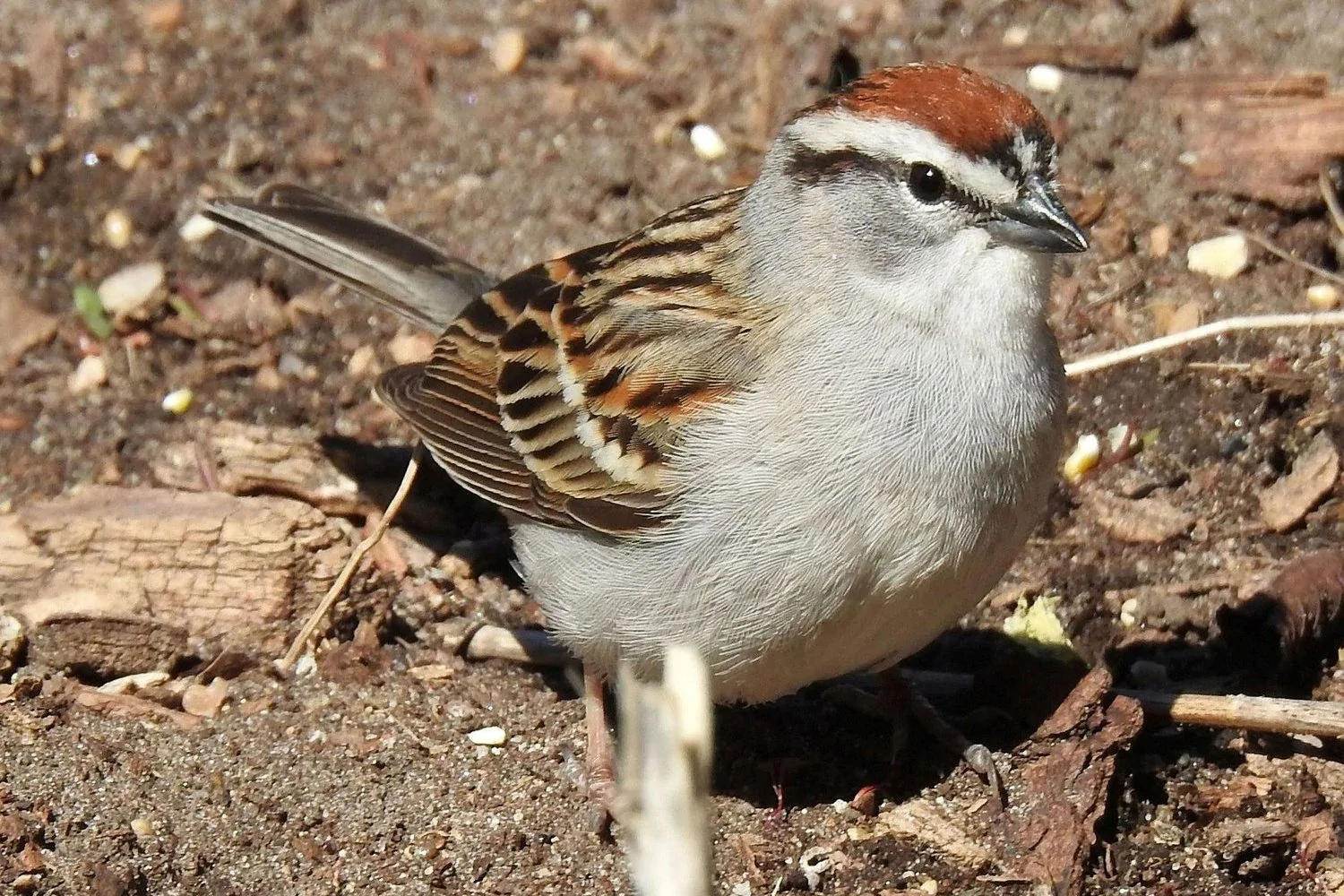
Chipping Sparrows are slender, long-tailed birds that have a grayish belly and brown and black-streaked back, with a rusty crown and black eye line. In winter, the colors are more subdued.
- Spizella passerina
- Length: 4.7-5.9 in (12-15 cm)
- Weight: 0.4-0.6 oz (11-16 g)
- Wingspan: 8.3 in (21 cm)
Chipping Sparrows spend their summer breeding in the US and Canada before flying to Mexico and Florida for winter. Some remain all year in the southern states.
They can be found in small flocks on the ground, often in woods and parks with trees.
Chipping Sparrow song: They get their name from the sharp ‘chip’ call they make. Their distinctive song is a stuttering trill.
Nests of Chipping Sparrows are off the ground, hidden in trees or shrubs, and are built by females. The nests are made from dried grass and small roots, but they are very basic and not very dense.
Chipping Sparrows lay up to seven eggs and up to three broods a year. The eggs take around two weeks to hatch, and the young fledge in under two weeks.
Attract Chipping Sparrows to your backyard with seeds or cracked corn on open feeders such as hoppers or platforms.
Fun fact: A group of Chipping Sparrows is known as a tournament.
4. American Tree Sparrow
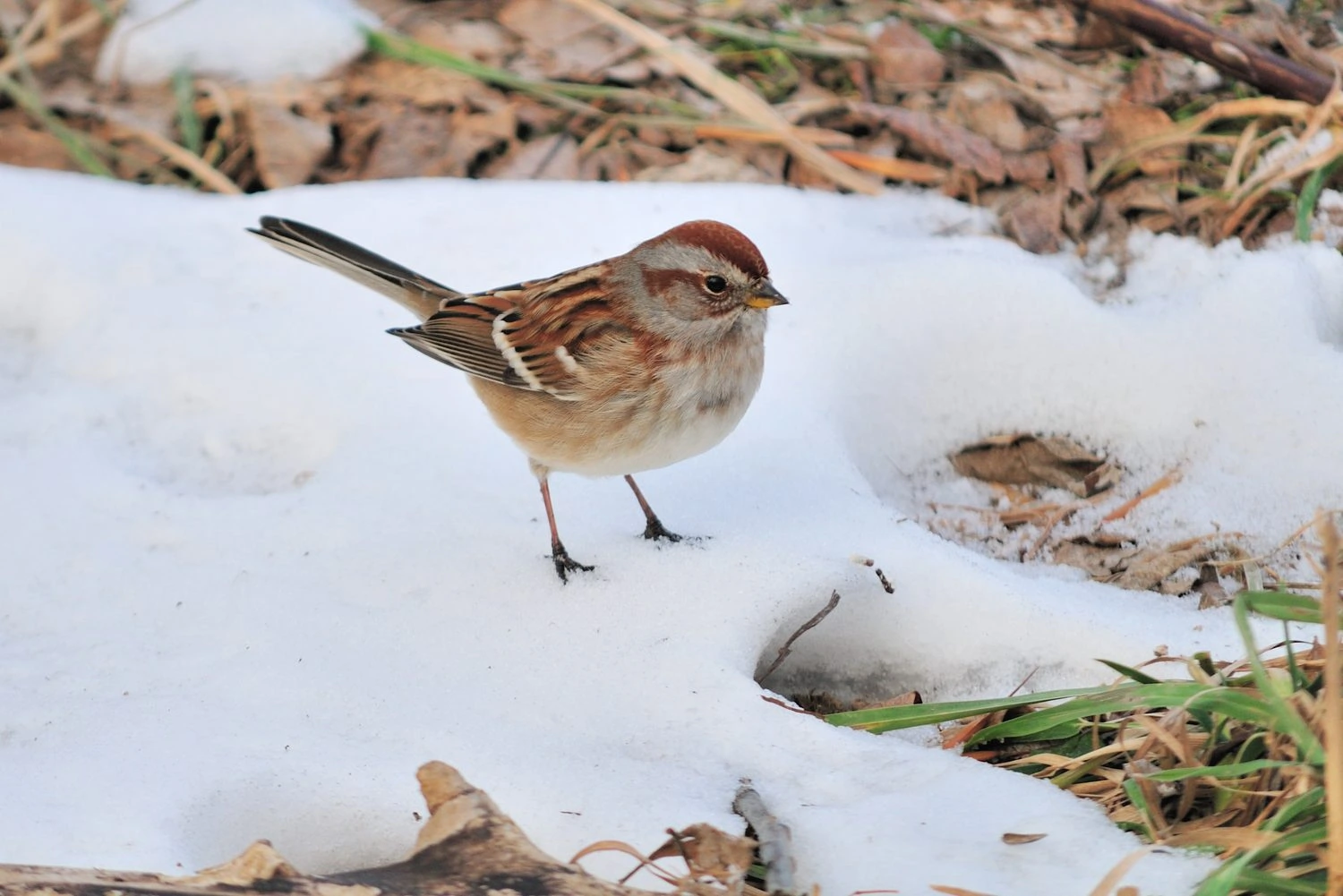
American Tree sparrows are long-tailed brown-streaked plump birds with rusty caps, gray faces, and a rusty eyeliner.
- Spizelloides arborea
- Length: 5.5 in (14 cm)
- Weight: 0.5-1.0 oz (13-28 g)
- Wingspan: 9.4 in (24 cm)
American Tree Sparrows are a bird of winter in the US and a bird of summer in Canada.
They breed in the far north of Canada and in Alaska and migrate to most US states for the winter, except the Pacific Coast and Gulf Coast.
They forage in small flocks in weedy fields and under bird feeders.
American Tree Sparrows song: Males sing a pleasant song from late winter, before migration. Their song is a tuneful series of rising and falling whistles.
Nests of American Tree Sparrows’ nests are usually on or near to the ground and are made of twigs, grass, and moss. They lay around four to six eggs, and these take just under two weeks to hatch and just over a week for the young to fledge.
Fun fact: American Tree Sparrows do not spend much time in trees but forage and nest on the ground. Their name comes from European settlers that thought they looked similar to the European Tree Sparrow.
Attract American Tree Sparrows to your backyard platform feeders with black oil sunflower seeds, nyjer, cracked corn, and millet. They also feed off the ground under tube feeders foraging for seeds dropped or discarded from above.
5. Clay-colored Sparrow
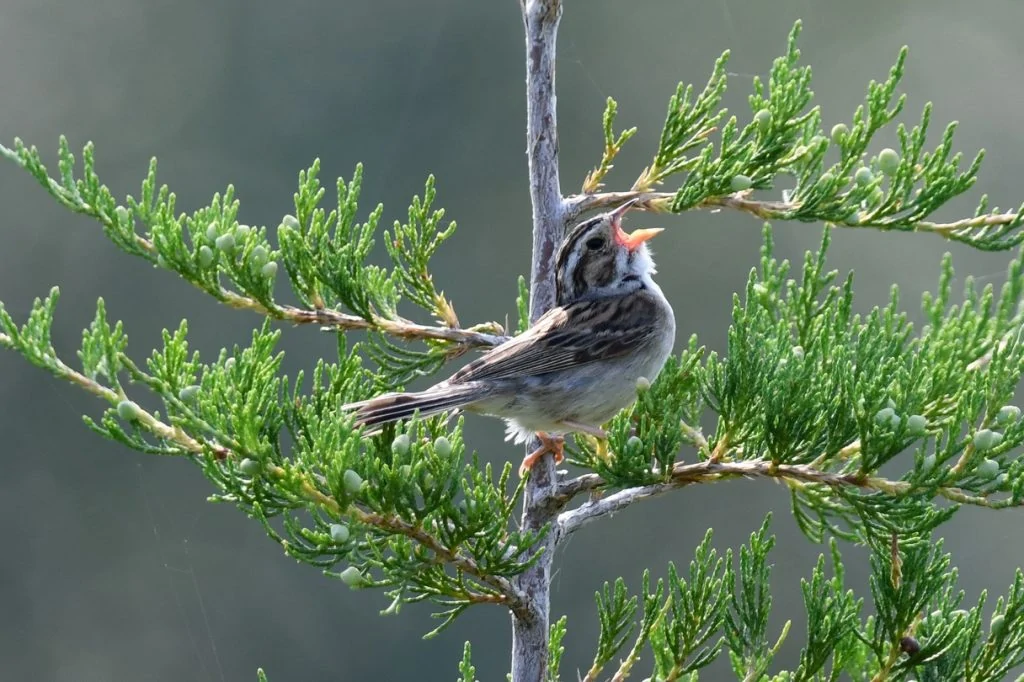
These small, plain birds of the northern prairies and Great Plains have distinctive head markings which set them apart from other sparrows. They have a gray collar around their necks and long notched tails.
- Spizella pallida
Clay-colored sparrows are the most common sparrow you can spot in summer in the northern prairies. They breed in Canada and the northern Great Plains before migrating south to Texas and Mexico.
In summer, you can find Clay-colored Sparrows in shrubland, looking for seeds, leaf buds, or the occasional insect.
Clay-colored Sparrow song:
Nests of Clay-colored Sparrows are usually close to the ground and well hidden in vegetation. The female makes them from twigs and grass, and line withed softer grasses and animal hair.
They lay up to five eggs which take up to two weeks to hatch and a further week or so for the young to leave the nest.
Fun fact: Young Clay-colored Sparrows leave the nest before they can fly, and they have to run for cover when there is danger.
6. Black-throated Sparrow
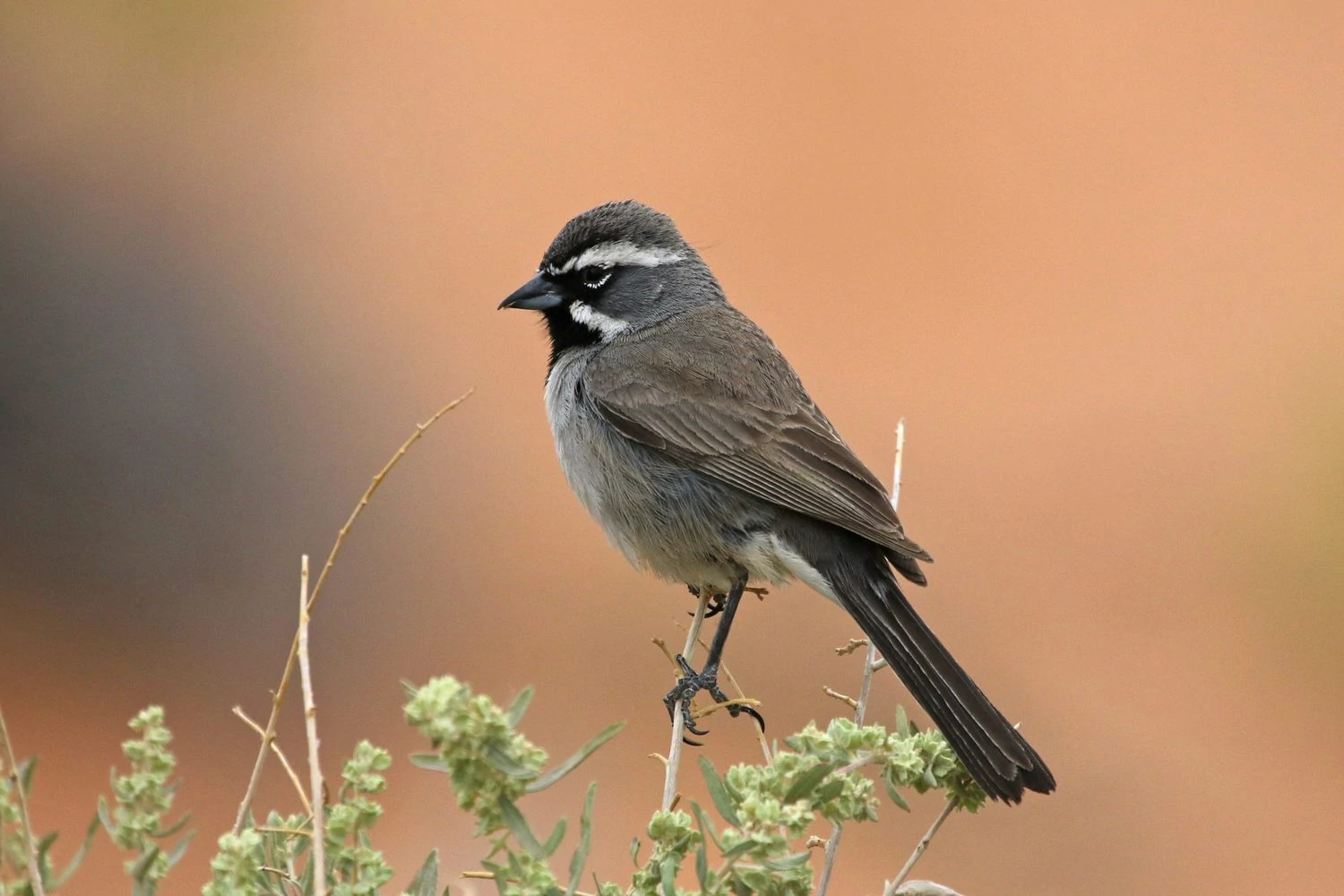
Black-throated Sparrows are one of the most easily recognized sparrows with their distinctive black throat and two bright white stripes on each side of their gray heads. The rest of them is pale underneath and grayish-brown on the back.
- Amphispiza bilineata
- Length: 4.7-5.5 in (12-14 cm)
- Weight: 0.4-0.5 oz (11-15 g)
- Wingspan: 7.7 in (19.5 cm)
Black-throated Sparrows are sparrows of southwestern US states. Those that breed further north in their range migrate, but those in the south of their range and Mexico remain all year.
You can find Black-throated Sparrows on the ground in open areas in canyons and desert scrub. They eat insects in summer and fallen seeds in winter.
Black-throated Sparrow song: The males’ song is a mix of some low notes, followed by a buzz and then a trill. The song is quite distinctive once you hear it a few times.
Nests of Black-throated Sparrows are low down in shrubs and made from desert plant material made into a cup shape and lined with soft grass and animal hair.
They lay up to five eggs, which take up to two weeks to hatch and a further ten days for the young to leave the nest.
Attract Black-throated Sparrows to your backyard with black oil sunflower seeds.
Fun fact: Black-throated Sparrows do not drink water during the hot desert summer and instead get all their moisture from the insects they eat.


